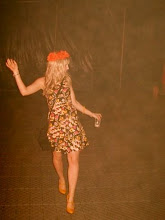I am going to start with rotary printing. This is an automated print process where the image is wrapped around a cylinder. Within this process there are 3 main types, offset lithography, rotogravure and flexography.
Offset lithography, more commonly referred to as litho, uses aluminium plates. The etched image rotates to transfer ink onto an offset blanket cylinder, which in turn transfers the ink to the paper surface.
 Rotogravure (Gravure) uses copper plates (with mirror images). This process transfers the ink directly to the paper. The advantages of this process are that the plates are very durable, therefore brilliant for doing long runs, plus the colour quality is very high.
Rotogravure (Gravure) uses copper plates (with mirror images). This process transfers the ink directly to the paper. The advantages of this process are that the plates are very durable, therefore brilliant for doing long runs, plus the colour quality is very high. Flexography (Flexo) uses rubber polymer plates and an ink reservoir. A positive, mirror image is used and applies the sticky ink directly to the paper feed.
Flexography (Flexo) uses rubber polymer plates and an ink reservoir. A positive, mirror image is used and applies the sticky ink directly to the paper feed. Digital printing uses codes to reproduce digital images on physical surfaces. No intermediate physical process.
Digital printing uses codes to reproduce digital images on physical surfaces. No intermediate physical process.Screen printing uses a woven mesh to create the image. The ink is forced through the mesh and touches the paper. The image is created by using an ink blocking stencil.
 Pad printing is when a silicone pad is used to mould around the i and places a 2D design/image onto a 3D object. I.e. pens
Pad printing is when a silicone pad is used to mould around the i and places a 2D design/image onto a 3D object. I.e. pens


No comments:
Post a Comment